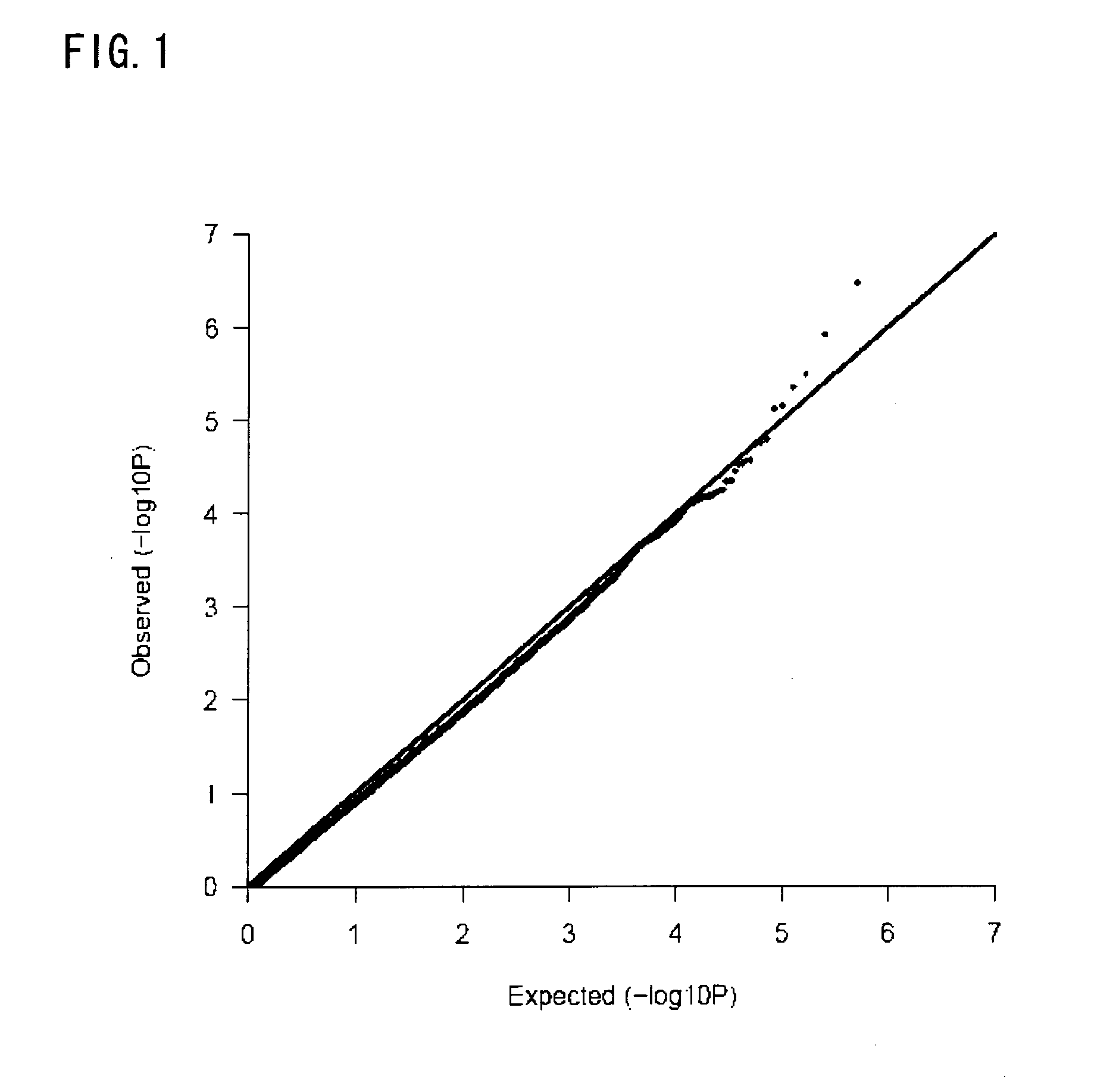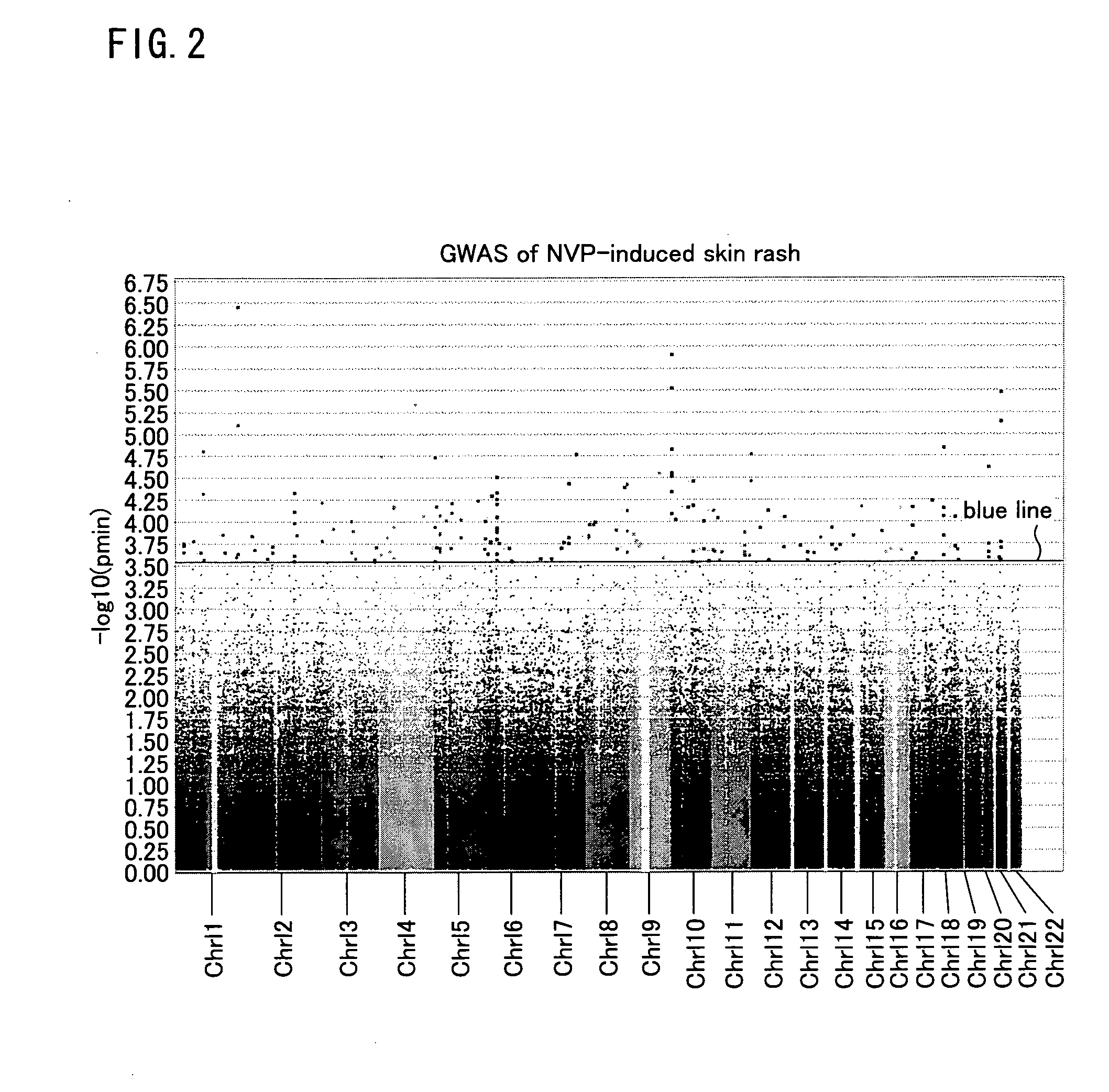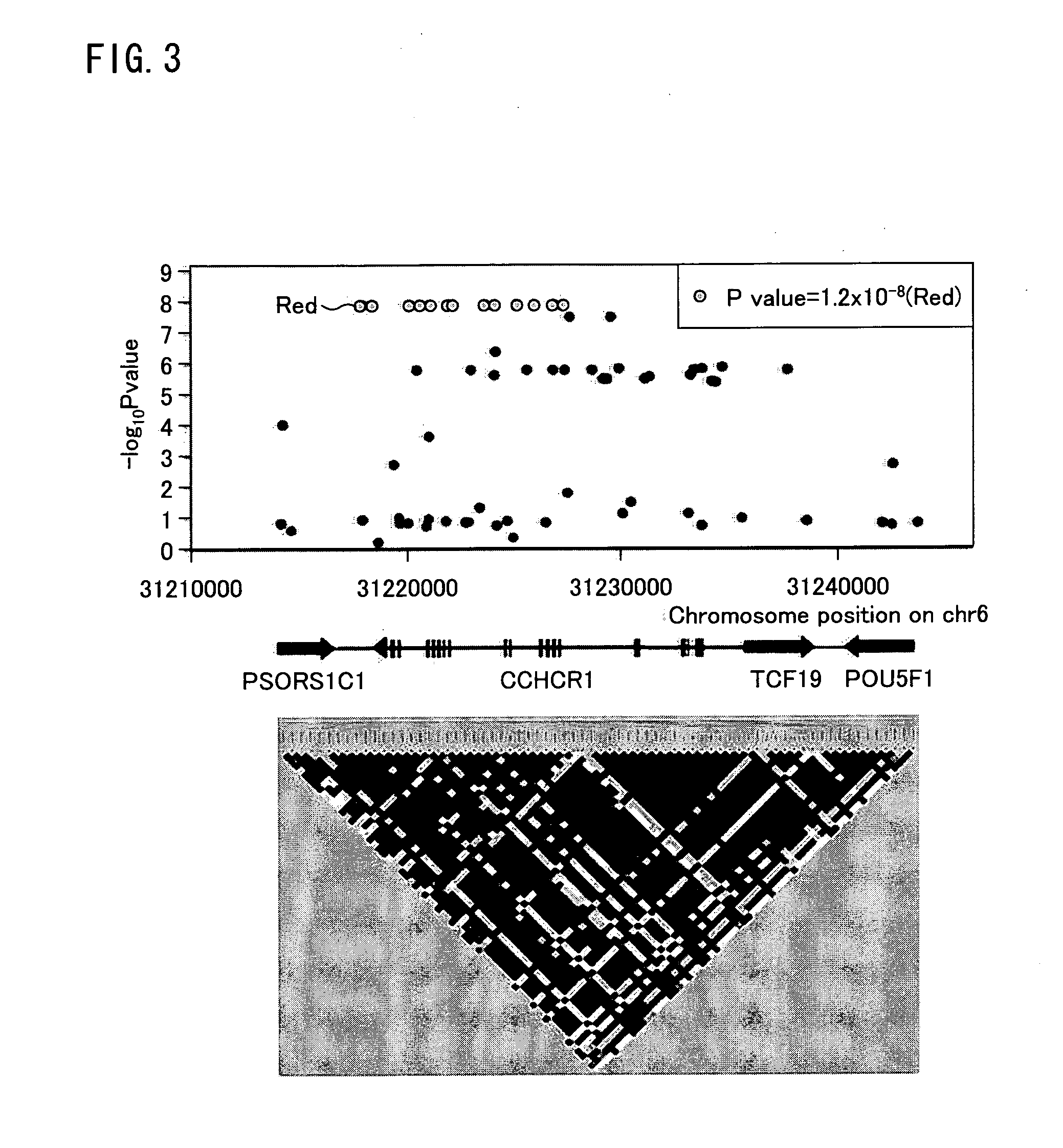Risk assessment for cutaneous adverse drug reactions from antiretroviral agent
a technology of antiretroviral agent and risk assessment, which is applied in the identification of library members, biochemistry apparatus and processes, instruments, etc., can solve the problems of skin rash, gastrointestinal and respiratory manifestations, and the withdrawal of marketed drugs
- Summary
- Abstract
- Description
- Claims
- Application Information
AI Technical Summary
Benefits of technology
Problems solved by technology
Method used
Image
Examples
example 1
HLA-B*3505
Study Population
[0054]A case-control study was conducted using HIV-infected That patients who visited (i) Infectious Disease Clinic, Ramathibodi Hospital, Mahidol University, (ii) Bamrasnaradura Infectious Disease Institute, Ministry of Public Health, or (iii) Department of Preventive Medicine, Faculty of Medicine, Srinakharinwirot University, Thailand. The enrollment of 80 skin-rash cases and 80 NPV-tolerant patients for the first set of samples was done between March and December, 2006. To verify a possible association in the initial screening, the second set of samples consisting of 67 skin-rash patients and 105 controls was enrolled between January and June, 2007.
[0055]Inclusion criteria were adult HIV-infected patients (>15 years old) who were treated with GPO-VIR®. Each eligible patient was followed up for at least 6 months after the initiation of NVP treatment or until they developed skin rash. Patients were categorized into case and control groups according to a pr...
example 2
CCHCR1
Study Population
[0068]A step-wise case-control study was conducted using HIV-infected That patients who visited (i) Infectious Disease Clinic, Ramathibodi Hospital, Mahidol University, (ii) Bamrasnaradura Infectious Disease Institute, Ministry of Public Health, and (iii) Department of Preventive Medicine, Faculty of Medicine, Srinakharinwirot University, Thailand.
[0069]Inclusion criteria were adult HIV-infected patients (>15 years old) who were treated with GPO-VIR® Patients were categorized into case and control groups according to a presence or an absence of skin rash. The control group was defined to be patients who revealed no evidence of cutaneous adverse reactions by the NVP therapy for more than 6 months. The case group was defined to be those with the skin rash after NVP exposure. The diagnosis of the NVP-induced rash was reviewed and given by infectious disease specialists. Severity of rash was categorized according to Division of AIDS tables for grading the severity ...
PUM
| Property | Measurement | Unit |
|---|---|---|
| median time | aaaaa | aaaaa |
| nucleic acid | aaaaa | aaaaa |
| food compatibility | aaaaa | aaaaa |
Abstract
Description
Claims
Application Information
 Login to View More
Login to View More - R&D
- Intellectual Property
- Life Sciences
- Materials
- Tech Scout
- Unparalleled Data Quality
- Higher Quality Content
- 60% Fewer Hallucinations
Browse by: Latest US Patents, China's latest patents, Technical Efficacy Thesaurus, Application Domain, Technology Topic, Popular Technical Reports.
© 2025 PatSnap. All rights reserved.Legal|Privacy policy|Modern Slavery Act Transparency Statement|Sitemap|About US| Contact US: help@patsnap.com



